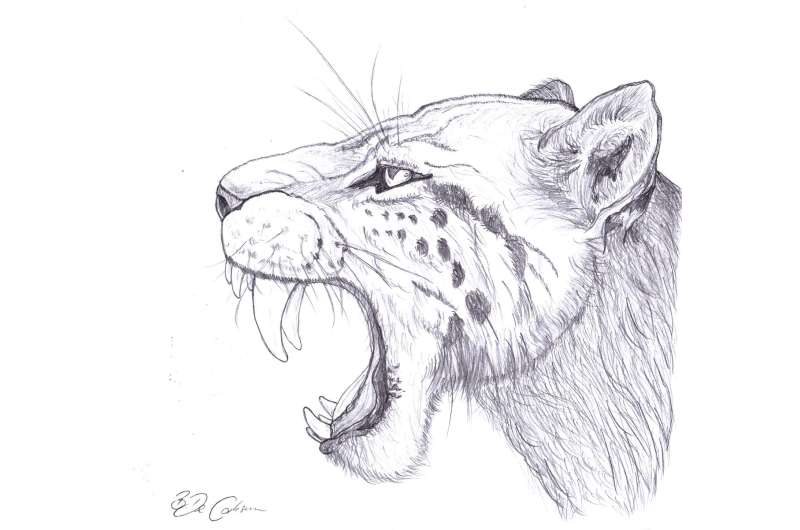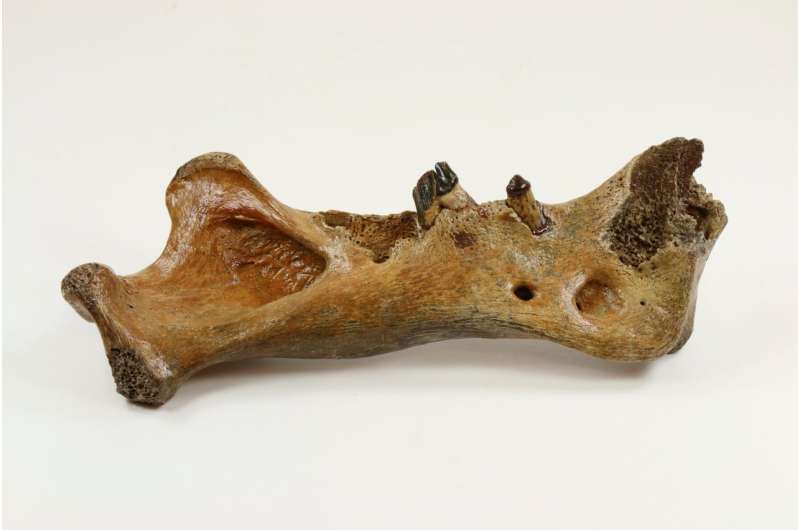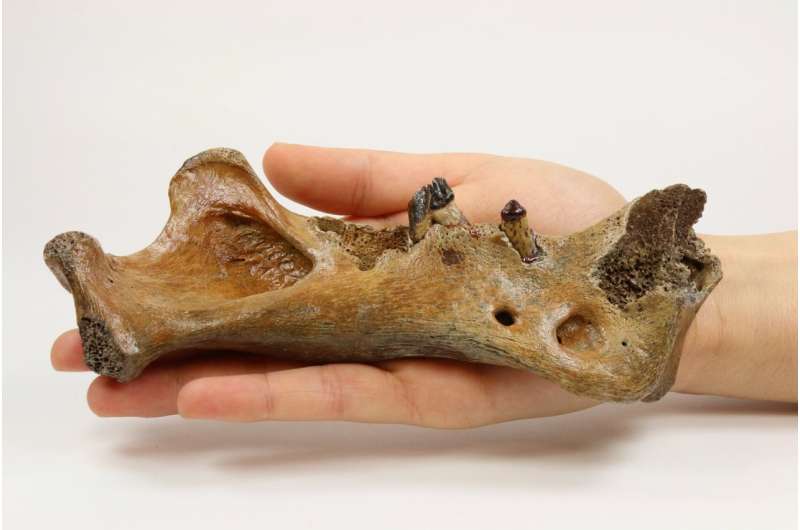Ancient DNA offers new view on saber-toothed cats' past

Researchers who've analyzed the complete mitochondrial genomes from ancient samples representing two species of saber-toothed cats have a new take on the animals' history over the last 50,000 years. The data suggest that the saber-toothed cats shared a common ancestor with all living cat-like species about 20 million years ago. The two saber-toothed cat species under study diverged from each other about 18 million years ago.
"It's quite crazy that, in terms of their mitochondrial DNA, these two saber-toothed cats are more distant from each other than tigers are from house cats," says Johanna Paijmans at the University of Potsdam in Germany.
Paijmans and colleagues reconstructed the mitochondrial genomes from ancient-DNA samples representing three Homotherium from Europe and North America and one Smilodon specimen from South America. One of the Homotherium specimens under investigation is a unique fossil: a 28,000-year-old mandible recovered from the North Sea.
"This find was so special because Homotherium is generally believed to have gone extinct in Europe around 300,000 years ago, so [this specimen is] over 200,000 years younger than the next-to-youngest Homotherium find in Europe," Paijmans explains.
The new DNA evidence confirmed that this surprisingly young specimen did indeed belong to a Homotherium. The discovery suggests that the saber-toothed cats continued to live in Europe much more recently than scientists previously thought.

"When the first anatomically modern humans migrated to Europe, there may have been a saber-toothed cat waiting for them," Paijmans says.
The finding raises new questions about how and why the saber-toothed cats went extinct. Paijmans says they are now interested in studying DNA from other samples of saber-toothed cats. Although it will be technically challenging, they also hope to recover and analyze DNA from much older Homotherium specimens.

More information: Current Biology, Paijmans et al.: "Evolutionary History of Saber-Toothed Cats Based on Ancient Mitogenomics" www.cell.com/current-biology/f … 0960-9822(17)31198-3 , DOI: 10.1016/j.cub.2017.09.033
Journal information: Current Biology
Provided by Cell Press




















